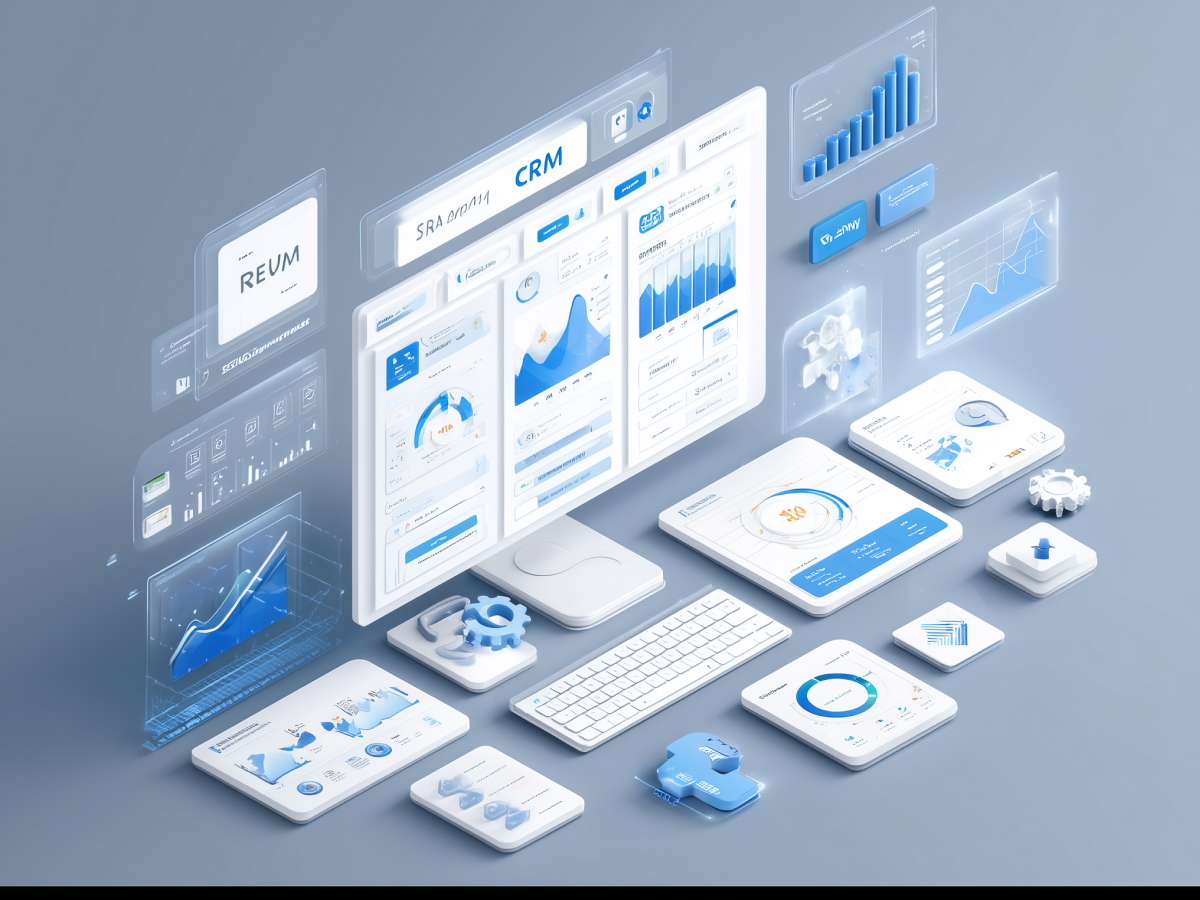Engineering capability gaps are increasingly challenging to identify and fill
The rise of tools like generative AI and breakthroughs in cybersecurity and data science aren’t slow evolutions, they’re rapid transformations. They’re also shifting what success looks like for engineering teams. So, if you’re only building for today, you’re taking on unnecessary risk. What you need are systems and thinking patterns that account for where you’re going next, not just where you are now.
Now combine that with severely constrained hiring pipelines. According to Gartner, the IT skills shortage remains at “critical” levels and will continue through at least 2026. Areas hit hardest include data science, backend and full-stack development, and cybersecurity, key pillars for any forward-looking company.
Adding even more complexity is the ongoing mismatch between available talent and required roles. Tech layoffs haven’t solved the talent gap, they’ve just shifted where the talent goes, creating bottlenecks in specialized skill areas. Engineers with relevant experience in modern AI frameworks, high-scale cloud infrastructure, or secure DevOps might still be scarce, even in crowded job markets.
Executives need to adopt a proactive mindset. Waiting for “perfect fit” candidates instead of building in-house advantages or making decisive contract hires won’t scale. There’s no long-term gain from falling into reactive cycles. Capability planning has to sit near the top of your strategic agenda, just below vision, and above operations.
A structured capability gap analysis framework is essential
Knowing where you are and where you want to go isn’t hard. That’s the easy part. But being honest about what’s missing between those two points? That’s where strong leaders actually lead.
You can analyze capability gaps using free, battle-tested templates. They work. They’re straightforward: define your current capabilities, clarify your target state, and identify what’s missing. That gap is where you need to invest time, training, or hiring. A good framework also helps you drop skills that your teams no longer need, technical debt isn’t just in code, it’s in people too.
There’s also a smarter way to think about capability planning, “reverse Conway’s Law.” Instead of deriving your product based on your current organization chart, define the outcome you want, and then work backward to figure out who, and what skills, you’ll need to deliver it.
This isn’t just process for process’s sake. When done right, this exercise forces clarity and reduces waste. Your product roadmap becomes not just a list of features, but a map for building the team who can ship them.
At Cockroach Labs, Isaac Wong, the VP of Engineering, applies a bi-annual planning process across his teams. They start by defining the most critical problems ahead, then map those to execution plans, surfacing dependencies and skill gaps along the way. Those gaps are documented and planned, for either through internal upskilling or by hiring the right people at the right time.
This structured approach is repeatable, measurable, and, most importantly, aligned with real business milestones. When your teams know what’s coming and why they’re being trained or hired, they move faster, and with more clarity. That’s where speed comes from. Not from pushing harder, but from planning smarter.
Clear strategic vision and risk assessment are critical for identifying capability gaps
Strategy drives everything. Without a clear direction, capability planning turns into guesswork, and guesswork is a liability. You can’t build high-performing engineering teams without understanding what the business is aiming to achieve, short-term and long-term.
The starting point is vision. Executives are responsible for defining where the organization is going. But it doesn’t stop at a high-level roadmap. Product managers and team leads need their short-term execution plans clearly tied back to that top-level strategy. That link is critical, it frames the capabilities required at every layer of the business.
You also need a strong sense of operational risk. When you step into a technical organization, pinpointing capability gaps goes hand-in-hand with evaluating system vulnerabilities. Alexis Cheshire, IT Director at the Hurlingham Club in London, takes this approach seriously. Her first step is usually a cyber risk assessment. Not because cybersecurity alone is the goal, but because it reveals deeper issues. If recovery time impacts revenue within an hour, it’s not just an IT issue. It’s a capability gap with business consequences.
The ability to translate risks, like downtime, data bottlenecks, or latency, into financial impact gives leaders sharper context for capability decisions. It clarifies which skills need urgent attention and what roles can’t be delayed. More importantly, it ensures the business doesn’t pay the price for decisions made in isolation.
Make no mistake: vision isn’t just a mission statement. It’s about aligning every talent decision with impact and timing. Without that clarity, even the most capable teams will underdeliver.
Continuous industry awareness is vital for anticipating future skill needs
You can’t lead in tech and stop learning. The moment you freeze, your capabilities start to decay. Technology shifts fast, and often without warning. That’s why engineering and tech leaders need to constantly monitor where the industry’s heading, not just what their competitors are doing right now.
John Harris, CTO at GT, puts it plainly: if you’re not paying attention to industry currents, you’re building blind. Staying connected through conferences, peer groups, advisory roles, and direct knowledge sharing is useful, not optional. It lets you spot trends before they hit maturity. By the time a new framework or methodology is standardized, top teams already have the talent and processes in place.
New frontiers like artificial intelligence, machine learning, and data science reshape the way problems are solved. Randy Russell, Director of Certifications at Red Hat, notes that these domains demand a different way of thinking altogether, not just new tools, but fundamentally new logic in the way solutions are developed and deployed. That has to reflect in your hiring, training, and development cycles.
This awareness isn’t about chasing trends. It’s about readiness. Knowing where technology is headed gives you the edge to shape your organization before the demands show up in the backlog, or worse, on a critical deadline. That momentum is hard to regain once lost.
Leaders who maintain this awareness don’t just react faster, they plan better. And that allows their engineering teams to scale smarter, adopt more relevant tools, and invest in the right skills before they become bottlenecks.
A tailored strategy is necessary to close capability gaps
Not every skills gap calls for a full-time hire. Before you involve recruiting, ask the right question: is this a long-term need or a short-term block?
A data-heavy project might require a database optimization expert for just a few weeks. Something more persistent, like a need for scalable cloud design, needs ongoing capability, which justifies bringing in or developing permanent talent. It’s up to leadership to define the timeline of the need before making the investment.
Alexis Cheshire, IT Director at the Hurlingham Club, explains it practically. She treats gaps the same way she’d evaluate a portfolio: some are tactical, some strategic, and some developmental. What matters is knowing which you’re solving for. Treat every resourcing decision as a calculated investment, based on both time horizon and return on organizational strength.
Internal development often gives you the best fit for long-term success. Isaac Wong, VP of Engineering at Cockroach Labs, says it directly. The best candidates often already work for you, they know the culture, they know how teams collaborate, and they bring less friction to execution. If they can grow into the role, give them that opportunity.
That said, forcing internal solutions when the timeframe doesn’t support it means you lose momentum. In those cases, use contractors or specialist consultants to keep the velocity high while planning for sustainable capability.
The point is this: don’t default to one method. Match the solution to the gap with discipline. Time, scale, and impact should guide the decision, not just availability.
Leveraging informal networks alongside professional recruiters is key
Finding great technical talent is hard, doing it in a vacuum is harder. Networks and recruiters both matter. But each has strengths and limitations that leaders should understand and manage.
Start with informal networks. They move fast. You get people with known performance, often vouched for by trusted contacts. John Harris, CTO at GT, points out that networks are one of the most powerful tools for learning and sharing. They also help close short-term needs without a lot of process. But there’s a risk: they can reinforce bias. You hire who you know, and over time, that limits diversity and breadth of thought.
That’s where professional recruiters come in. They bring scale and access. They’re tapped into markets and roles that your network might not touch. James Footman, EMEA Recruiting Manager at HashiCorp, sees their job as giving companies visibility, real market intelligence. A good recruiter speaks to hundreds of professionals weekly, giving them an accurate pulse on who’s available, what they cost, and what they want next.
When it comes to deeply specialized roles or new competencies, recruiters can speed up hiring and reduce friction. They widen the talent pool and get you outcomes quicker. Assuming you’re working with the right ones, the return on investment is clear.
Leadership comes down to knowing when to leverage trusted contacts, and when you need broader reach with less bias. Use both. But apply intentionality. Capability gaps aren’t solved by trial and error, they’re solved by using every talent channel properly.
Human resources plays a critical role in the overall capability gap strategy
HR isn’t just a back-office function, it’s central to your execution model. If you’re serious about managing capability gaps effectively, start treating human resources as a strategic partner, not an administrative cost.
Strong talent operations mean more than sourcing resumes. HR should help you assess whether a candidate, not just on paper, but in behavior and expectations, can integrate into your organization’s operating model. That includes understanding collaboration styles, communication norms, and expectations around speed and ownership.
HR is also key to talent retention. If your best engineers are leaving, you’re not just losing people, you’re weakening your ability to execute. John Harris, CTO at GT, emphasizes HR’s role in keeping top talent supported. That doesn’t just mean benefits and perks, it means adapting internal systems to foster satisfaction and effectiveness.
Isaac Wong, VP of Engineering at Cockroach Labs, points out another layer: the impact of unconscious bias. Teams often hire people who look and think like them. That creates blind spots. If your database team keeps hiring more database engineers, they’re likely under-indexing on front-end skills, or ignoring other critical roles. HR can help recognize those narrowing patterns and counteract them.
In smaller organizations, there is usually no in-house HR leadership. In those cases, external recruiters or consultancies can play a strategic role. But they must understand your culture deeply. If they don’t, you risk hiring for skills without hiring for fit, and that doesn’t solve capability gaps, it creates new ones.
Underestimating HR is a mistake that slows down growth. Companies that get this right build teams that stay longer, move faster, and evolve as the market shifts.
Effective negotiation and offer practices are vital for securing the right talent
You’ve found the person who fits your capability need. The offer you make next determines whether you’re just filling a seat or investing in long-term value.
The offer process should not be reactive or rushed. It’s part of expressing your company’s operational standard. James Footman, EMEA Recruiting Manager at HashiCorp, is clear on this: the offer must be based on the role’s worth, not the candidate’s current pay, background, or identity. That means defining what the position demands in terms of future outcomes and compensating accordingly.
There’s a broader mindset to shift. If a negotiation becomes purely money-focused, it might be a sign of a weak fit. John Harris refers to this issue directly, great candidates are aligned with mission, not just compensation. That doesn’t mean ignore salary, it means communicate value holistically.
Benefits like career progression, flexibility, equity, or learning opportunities often hold more long-term weight than a bump in base pay. That trade-off must be part of every offer conversation. Talent today is thinking long-term, you need to match that perspective.
Recruiters or HR should be trusted enough to negotiate these offers with clarity and speed. They need to understand what matters most to the candidate, and be equipped to close in a way that reflects the company’s expectations and culture.
Bottom line: you don’t secure top talent through luck. You do it by defining fit, recognizing value, and delivering a compelling future alongside a competitive package. Do that consistently, and your capability gaps won’t stay gaps for long.
Strategic leadership is essential for bridging capability gaps
You can’t outsource this part. The responsibility to identify, prioritize, and close capability gaps sits with leadership. Not HR. Not operations. Executives, especially in engineering and product-driven organizations, need to own it.
It starts with precision. Capability gaps aren’t broad problems. They’re specific. Great leaders know how to map current strengths, spot weak points, and link talent investments to execution. That means understanding your teams as well as you understand your roadmap.
Tools and frameworks can help. Templates for capability gap analysis are widely available and easy to implement. But real progress depends on how leaders interpret that data, and what decisions they make because of it. You need clearly defined objectives, an accurate read on team skills, and a logical plan to bridge the space between them.
It’s a process that has to scale with the business. For startups, it’s about moving fast without losing clarity. For mature companies, it’s about staying aligned while growing. Wherever you are, decisions around who you hire or promote aren’t just tactical, they shape the company’s ability to ship, compete, and innovate.
Execution improves when leaders are fully engaged in the human side of engineering. That includes technical conversations, yes, but also coaching, team structure, and cross-functional alignment. These aren’t soft topics. They impact delivery timelines, quality, and velocity as much as tooling and architecture do.
Leaders who build execution into their leadership stack, who understand that people are compounding assets, tend to outperform. That’s not theory. It’s operational reality. When skill planning lives at the executive level, businesses don’t just adapt to change. They create it.
Concluding thoughts
If you’re leading teams, gaps are your job to close. Not next quarter. Now. The pace of technology doesn’t slow down, your capability planning can’t either. Every delay, every mismatch in skills, is a drag on execution and growth.
The companies pulling ahead aren’t doing more. They’re doing it with the right people, at the right time, with the right focus. That doesn’t happen by accident. It takes clear vision, consistent scanning of what’s changing, and the discipline to adapt before it’s urgent.
Build systems that surface skill gaps early. Invest in people who can grow. Bring in expertise when timing demands it. And make sure your recruiters, HR, and leadership teams are aligned, not just on hiring, but on capability as a competitive edge.
That’s how you move fast without breaking your foundation. That’s how you stay in front.





